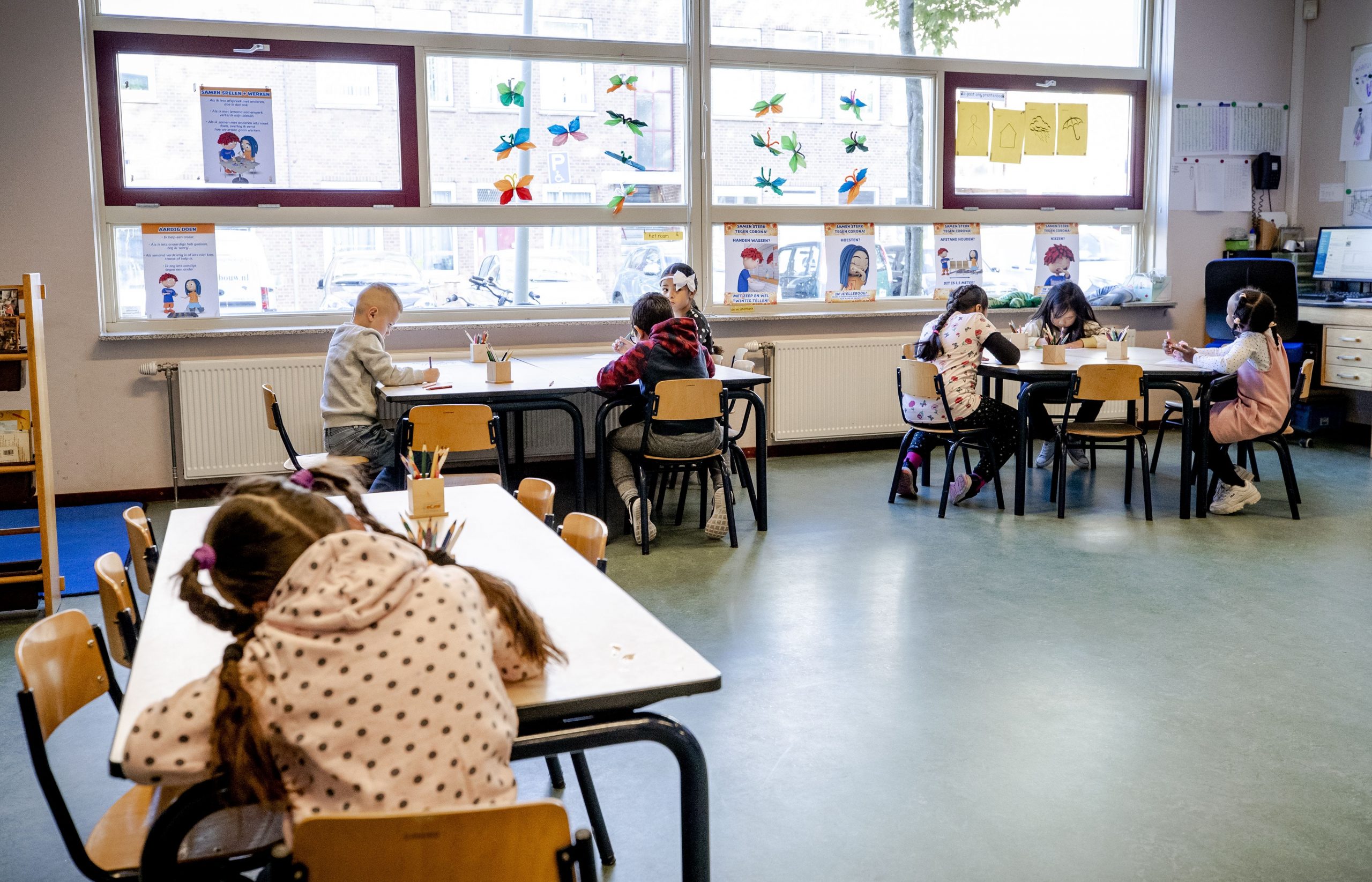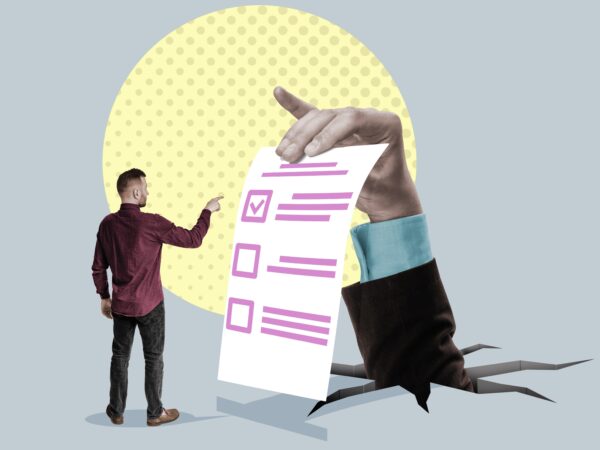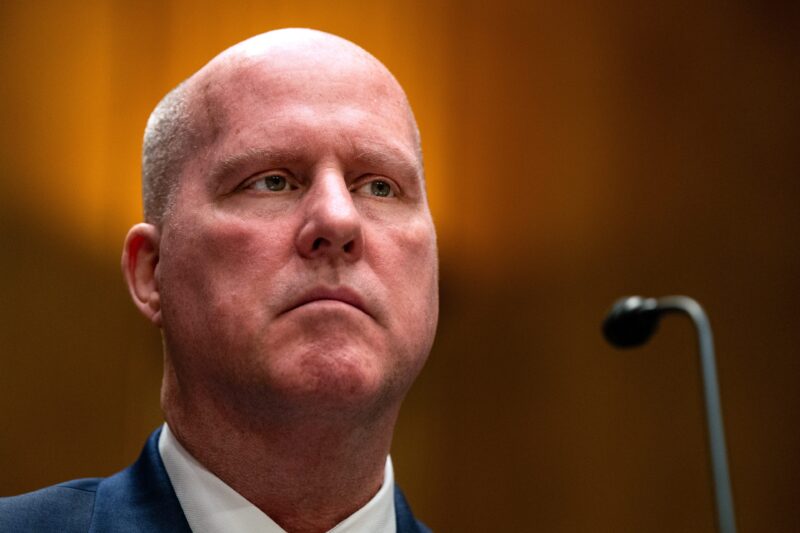- Parents are weighing the coronavirus-related risks of sending their kids to school against the education and social losses of keeping them home.
- Kids are generally less susceptible to severe illness than adults, but it’s still possible for them to be infected.
- Keeping your child home could negatively impact their mental health and delay their social and educational development.
- The prevalence of the virus in your community and your school’s plans for controlling the virus also matter.
- Visit Insider’s homepage for more stories.
This was supposed to be Vanessa Wingerath’s “golden year.” For the first time, her three young children would all be in school, and the Tucson-based doula would have more time to focus on herself and career.
Then the coronavirus pandemic hit, and sending kids to school was no longer a given.
Sending only one or two kids to school could topple the family dynamic. Keeping them all home could strain Wingerath’s schedule and peace of mind. But sending all the kids to school could cascade into tragedy, if one of them contracts the coronavirus.
Around the country, parents like Wingerath are playing out similarly unwinnable scenarios involving two central questions: Do they risk exposing their kids to the coronavirus at school, or risk losing critical educational and social ground by keeping them home?
Experts say there's no risk-free answer. The right one for your family should be influenced by your kid's age and health status, their learning tendencies, and the impact any choice could have on your family's mental health - if you're in a position to make the decision at all.
Some parents don't have in-schooling options in their areas this fall, and others must send them to school so they can go to work.
Kids are more protected against the coronavirus, but it's possible for them to get seriously ill
Anyone can contract COVID-19, the disease caused by the coronavirus, but young children are less susceptible to infection than adults and tend to experience more mild symptoms if they do get sick.
The latest data shows that children represent just over 7% of all confirmed cases of COVID-19. That's likely an underestimate since kids are much less frequently tested than adults, Dr. Tina Tan, a pediatrics professor at the Northwestern University Feinberg School of Medicine, said during a media webinar July 23rd.
Children also make up about 3% of the total reported hospitalizations, and about half a percent of all COVID-19 deaths, Tan said.
Why younger people seem to be more protected from the illness is unclear, but there are some theories. Among them: Kids seem to have a more tamped down immune response to the virus, and they're more likely to host and get sick from other viruses "that basically compete with COVID-19," Tan said.
There are exceptions to this inherent virus protection. Babies under a year and kids with underlying conditions are at greater risk of more severe infections or death.
Kids of any age may also be at risk for multisystem inflammatory syndrome, a rare but potentially life-threatening condition that can follow a COVID-19 infection.
The condition, often marked by fever, diarrhea, vomiting, fatigue, or confusion, has been reported in at least 342 children in the US. At least six have died.
Doctors don't know why certain COVID-infected children experience the condition, but Black and Latinx kids seem to be disproportionately affected.
Younger kids are less likely to spread the virus than teens
While the CDC says anyone under 18 likely plays a role in transmission, even if they don't have symptoms, kids under 10 don't seem to spread the virus as easily as older kids and adults.
That's due in part to their smaller lung capacity, which makes them less likely to "expel enough air to create as much spread of disease," Dr. Nathaniel Beers said in a WebMD interview.
But once they hit their pre-teens and teens, children may be especially able to spread the virus. A recent study from South Korea found that kids ages 10 to 19 are more likely to spread the coronavirus to their household contacts than any other age group.
That's why parents need to take into account the risks that sending kids back to school pose not just for them, but their communities.
Beers recommended parents think about whether people the kids frequently come into contact with are at higher risk for severe disease due to an underlying condition or age.

Young children may be at a heightened risk for developing mental health issues when isolated from friends and teachers
While home and isolated from friends and teachers, children may be at a higher risk of developing mental health issues.
A study published in April in the Journal of the American Medical Association Pediatrics found that children in China, in grades two to six, experienced higher rates of depression and anxiety while in lockdown. Longer durations of lockdown were associated with higher rates of anxiety and depression.
Come fall, children in the US will have already experienced three months of school disruptions - considerably more time than the children surveyed in China underwent.
Compounding the issue of isolation are the inevitable stressors parents can't protect their children from, including fears around developing the disease, concerns about family members getting sick, and worries about the family's financial state.
Teenagers struggle more than any other age group when cut off from their social networks
Even before the pandemic, teen suicide was on the rise in the US.
Experiencing feelings of isolation, depression, and anxiety - which is common while stuck at home - raises the risks for suicide, according to the CDC.
Spending greater amounts of time online can also exacerbate feelings of loneliness, agitation, anger, and despair, said Cynthia Martin, a psychologist at the Child Mind Institute in New York City.
While older children are at somewhat of an advantage, since they're accustomed to communicating with their friends online, they're still susceptible to feeling lonely while learning remotely.
"Older children and teens are really missing their friends and their independence," Roseann Capanna-Hodge, a psychologist who practices in Connecticut, told Insider. "Teens are struggling with the lack of social connection more than any other group."
Most students are at risk of falling behind academically while learning remotely
While some students may perform better academically in a homeschool environment, many studies say full-time online learning doesn't provide the same academic benefits as learning in person.
Once school resumes in September, the average student will have lost as much a third of their progress in reading and half of their progress in math, according to a study from the Northwest Evaluation Association.
"The digital classroom can be boring, stressful, or distracting for kids and that can be so hard on kids in so many ways," Capanna-Hodge said.
Academic regression, though, will vary across households and will depend on a number of factors, including how involved caregivers can be in overseeing a students' work, how well students are able to focus, and internet access.
Distance learning could impact children's social skills, and is especially worrisome for younger children
Learning from home, and only interacting with friends and classmates virtually, could negatively impact children's socialization skills.
"For the younger kids, even as young as 2 and 3, the impact is greater," Stephanie Koh, a board certified behavior analyst, said of the risks of losing social skills while learning from home. "Preschool is where kids learn social skills such as sharing, taking turns, play initiation, language, navigating conflict and resolution, as well as self-help and adaptive skills."
At the same time, children who have siblings can just as easily develop critical social skills through play with their brothers and sisters.
While older kids and teens have the advantage of being able to stay connected to friends virtually, they also depend more on spending time with friends than younger children do.
Learning from home puts teenagers at risk for losing social skills, especially if they spend considerable amounts of time scrolling on social media, Capanna-Hodge said. They may, for example, have reduced comprehension of nonverbal emotional cues.

There's no single right answer for every family
Wingerath, the mom of three in Tucson, ultimately decided with her husband to send all three kids to school.
They felt comfortable with the preschool's handling of the risks and their communication, and were able to secure spots for the older two in a Montessori school where they'd attended pre-K.
The middle child will be only going half days and the oldest will alternate weekly between online and in-person school. "It felt like the right decision," Wingerath said.
The "right" decision is different for every family.
Tricia Kent, a mom of a 13-year-old in Vero Beach, Florida, plans to keep her daughter home. "If she ends up getting COVID from another student, is asymptomatic and brings it home to me … as a single mother, this really worries me," she told Insider.
Dr. Wendy Armstrong, a professor of medicine at the Emory University School of Medicine and mom of a rising sophomore, isn't yet sure of the right answer for her family.
Two things will help her decide: How prevalent COVID-19 is in her community when schools open and what plans the school has in place to mitigate spread.
"One of the really important questions parents can ask is for transparency with the respect to the plans a school system has put in place," Armstrong said during the webinar with Tan.
"We don't know what the perfect plan will be, but certainly it needs to be something thoughtful and decided upon in advance."
- Read more:
- A top school official says very few schools will open 100%, as Trump insists. 'The federal government is not the nation's school board'
- I'm a public school teacher and I want to return to my classroom. But not like this.
- The YMCA provided childcare to 40,000 kids during lockdown and said it didn't see any coronavirus outbreaks. Here are 11 precautions it took that worked.
- A preschool teacher in Sweden says she wonders 'how many people will die because of me' as parents are required to send kids to school










